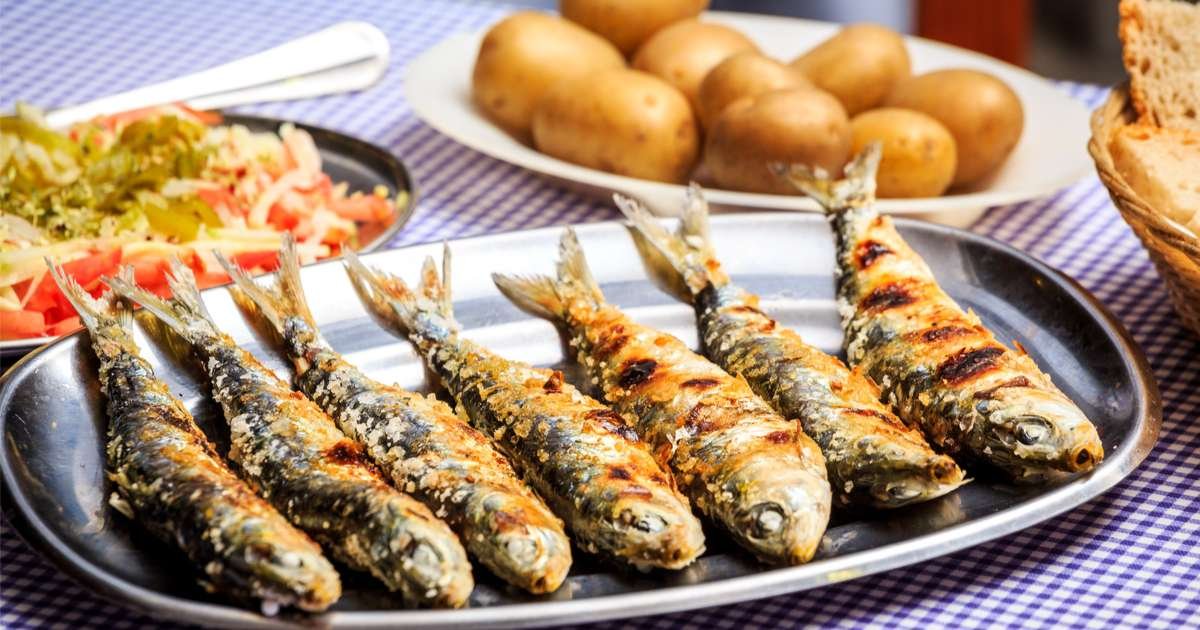Portugal’s geographic location on the western edge of Europe makes it an ideal candidate for fresh seafood and produce. With more than 500 miles of coastlin, an abundance of seafood can be found in markets year round. Despite the differences in culinary pockets across regions, some staples you’ll almost always find where you travel and eat are seafood, grilled meat, olive oil, grapes, grains and garlic.
Many would describe Portuguese food as simple, prepared with a short repertoire of spices and almost always served with local olive oil. Simple it may be, but the flavors represent Portugal’s history with trade and the contact the country had with other cultures. The food culture can best be described as a happy marriage between Mediterranean cuisine and the bold flavors of African and Brazilian gastronomy.
We have put together a list of the 15 must try dishes and drinks when in Portugal. These foods and beverages are essential to understanding the country, the lifestyle of the people and the flavors that tie everything together.
1. Bacalhau
We have to start with the most famous of famous fish in Portugal, bacalhau. The salted cod has been part of Portuguese cuisine for centuries. Rather than recommending a specific dish, we suggest you try any of the numerous ways it is prepared. You’ll discover that it can be baked or grilled, boiled in cream sauces or deep fried in croquettes. Rumor has it that there are as many ways to prepare it as there are days in the year.
Bacalhau is a food packed with as much Portuguese history as it is salt. Centuries ago Portugal gained its power as a seafaring nation embarking on long expeditions. Preservable food was a necessity and sailors began salting the fish so that it could be stored for months at a time. Slowly, the recipes they enjoyed made their way to tables of families and restaurants, making bacalhau the famous seafood associated with Portuguese cuisine and earning its reputation as, “the fish that saved the world.”
- We recommend trying it at: Casa do Bacalhau
- Address: Rua do Grilo, nº54 1950-145 Lisboa
- Hours: 12-3pm & 7:30-11pm
- Instagram: Instagram.com/AcasadoBacalhau/
Discover more about the history of Portugal's most famous dishes on the audio-guide tour, A Taste of Alfama.
2. Polvo à Lagareiro
Although simple on the surface, the flavors in polvo à lagareiro are anything but. Translated to octopus with olive oil, this dish features a heaping amount of tentacle meat and potatoes which were first placed in a pressure cooker before roasting in the oven. The results are buttery textured meat and slow-baked potatoes, soft and creamy from the olive oil they swim in. To top it off, the dish is heavily sprinkled in herbs, onions, garlic and even more olive oil.
The name lagareiro takes its meaning from the trend of pouring olive oil as generously as if you were the oil producer with an unlimited amount at your disposal. Cooking the octopus in such a copious amount results in meat so tender that it melts in your mouth with every succulent bite.
- We recommend trying it at: Floresta Das Escadinhas
- Address: R. de Santa Justa 3, 1100-483 Lisboa
- Hours: Wed-Sat. 12:00-3:30pm
- Instagram: Instagram.com/FlorestaDaseEsadinhas/
3. Sardinhas
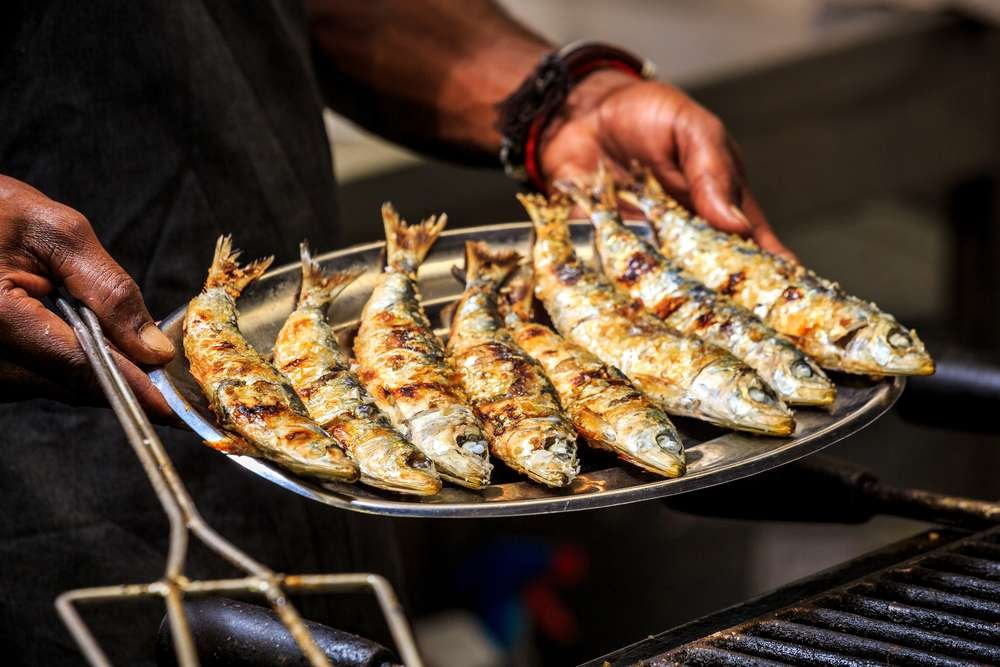
Sardinhas, or sardines, are one of the most commonly eaten fish in Portugal. Sardinhas assadas are served straight from the grill, first being tossed in olive oil and salt and then served on a slab of bread to be eaten whole. Grilled sardines embody the flavor of summer as they’re always served at the neighborhood parties and beach BBQs. During the month of June the city streets become filled with people all gathering to celebrate the saints with sardine festivals.
While they are freshest during the summer, the Portuguese have perfected the art of conserveiras- which refers to the canning method. Marinated in olive oil, tomato sauce and a range of spices, they have become a delicacy in the country and are showing up on menus as petiscos, small appetizers, at the most elite restaurants in Lisbon. Packaged in colorful cans with artsy imagery, they make for fantastic souvenirs.
- We recommend trying it at: Lisboa Tu & Eu
- Address: R. da Adiça 58, 1100-118 Lisboa
- Hours: 12:30-4:30 & 7-10pm
- Instagram: Instagram.com/LisboaTueEu
Discover where you can buy these cans and other souvenirs and where the best shopping streets are in Lisbon in our all inclusive Shopping Guide.
4. Caldo Verde

Coming from the North of Portugal, Caldo Verde is considered by many to be the national dish of Portugal and so much so that in 2011 it was agreed on as one of the Seven Wonders of Portuguese cuisine. Made from a stew of local cabbage, potato, onion and often sausage, it's savory and satisfying. The cabbage used is a strain only found in the country.
Caldo Verde has become a sought out foodie gem although it actually started as a meal for the lower classes. The potato base is creamed to perfection and the sausage gives it a nice smoky kick, although vegetarian versions can be found.
- We recommend trying it at: O Caldo Verde
- Address: Rua da Esperança 91, 1200-109 Lisboa
- Hours: Tues-Sun. 11:30-3:30 & 7:30-12am
5. Chouriço
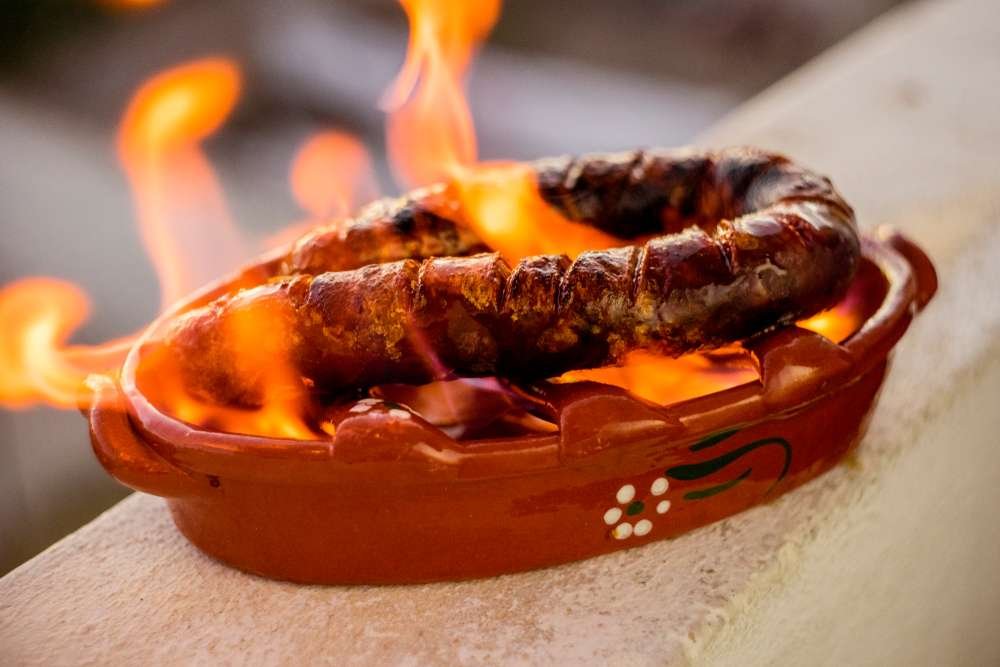
When you order chouriço, the spicy paprika flavored sausage, be prepared for a clay plate with flames to arrive at the table. Chouriço appears in a variety of dishes across the country, but fire roasted at the table is hard to beat. Before being cooked the sausage is sliced in various spots so that the inside juices can bubble out while the skin is charred.
Eaten in Portugal as both a meal and a snack it is prepared a number of ways, including served in thin cold slices on an appetizer platter, boiled, fried, thrown in soup or baked into bread.
- We recommend trying it at: Tasca do Chico
- Address: R. do Diário de Notícias 39, 1200-141 Lisboa
- Hours: 7pm-2am
- Instagram: Instagram.com/TascaDoChico
6. Azeitão
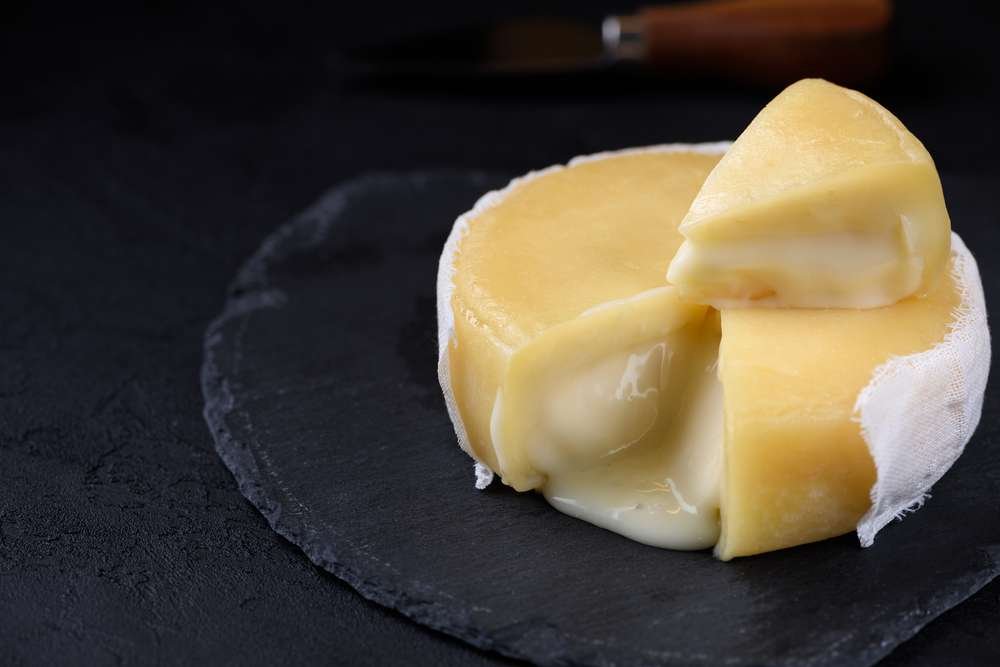
The name for cheese in Portuguese is queijo, and while you should try as many as possible the one that should top your list is azeitão. This queijo is so good that in 2014 it was named one of the top fifty gastronomic products in the world. Pop into any wine and cheese bar and order yourself a serving of the unique delicacy. The cheese comes with a hard wax coating but the inside is a gooey sheep’s milk delight.
This type of cheese originates from a town not far from Lisbon, less than a half hour's drive, called Azeitão. The process of creating it includes thistle flowers which are used to separate the curds, infusing it with a subtle flowery taste.
- We recommend trying it at: you can find this at almost all markets and grocery stores
Cheese is best paired with wine, and we suggest you check out the top must-see bars in Lisbon during your visit to the Portuguese capital.
7. Piri Piri Chicken

Piri Piri or Frango Assado is one of the foods which reflects the contact Portugal had with Africa in the 15 century. The spices and flavors for this chicken were brought back from countries such as Angola and Mozambique and today can be found in every churrascaria in the country.
First, the chicken is marinated in a bowl of lemon, paprika, pepper, garlic, oregano, thyme and a mix of chillies- which is where it gets its name. Piri piri refers to the chillies used and was most likely inspired by the Swahili term, “pili pili”, which means a pepper so hot it makes you say its name twice. The chicken is then thrown on an open flame grill or roasted on a spit, creating a crisp spicy outside which holds in all the juices of the marinated inside. It's traditionally served in half or full chicken portions, which sounds like a lot, but we promise you’ll want more.
- We recommend trying it at: Frangasqueira Nacional
- Address: Tv. Monte do Carmo 19, 1200-276 Lisboa
- Hours: 6-10pm, closed Tuesday and Sunday
- Instagram: Instagram.com/FrangasqueiraNacional/
8. Pastel de Nata
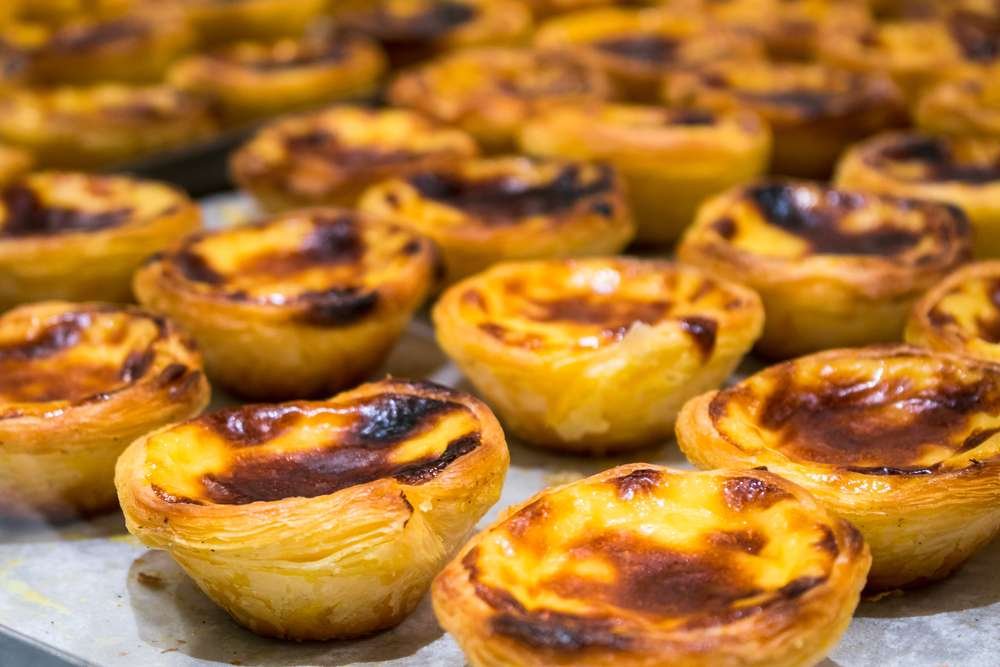
Pastel de nata is normally the first thing that pops into peoples’ minds when they think of Portuguese food. And for good reason- the golden colored tarts are everywhere! First a flaky, buttery cup of dough is formed before filling it with creamy egg custard. They are then popped into the oven and cooked until the top has been caramelized. The final step is a sprinkling of cinnamon and powdered sugar and tah-dah! Magic.
Pastel de nata has a unique history as it was first baked during the 1800s when the monasteries had an excess of egg yolks after using the whites to starch clothing. Today the original recipe, passed down through generation to generation of family bakers, is held in Belém at the famous Pastéis de Belém. Grab one at pretty much any bakery in the country or stop by a specialized pastelaria that is dedicated solely to making the dessert and perhaps have the chance to see them being made during a live demonstration.
- We recommend trying it at the original bakery when you take an audio-guide Tour of Belém, offered by YourMobileGuide. Together with a local narrator's voice, discover the top sights of the cultural district.
9. Portuguese Meat Sandwiches
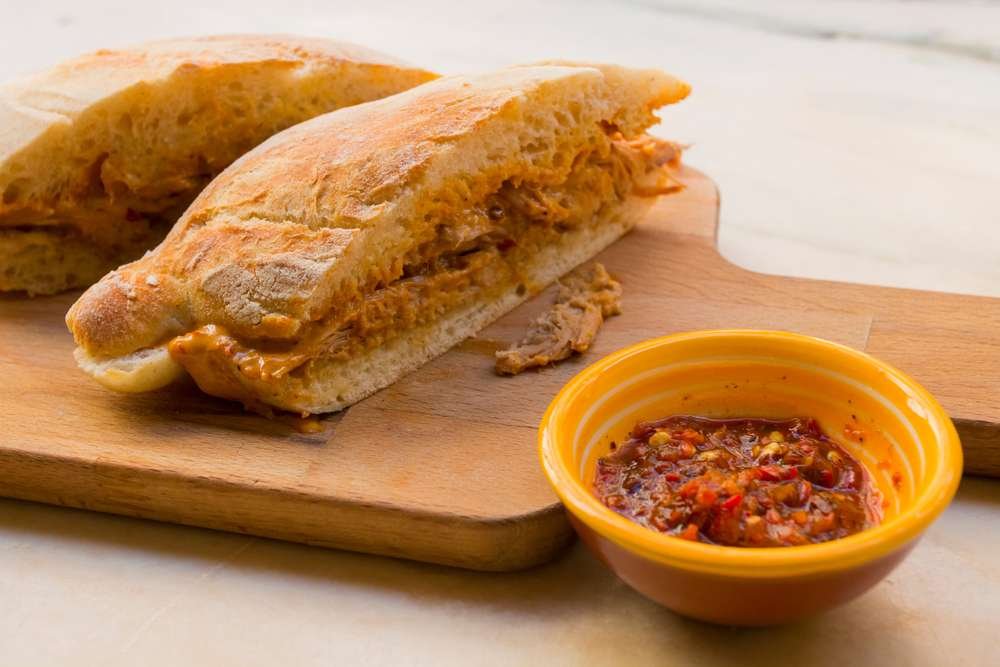
The two most popular sandwiches in Portugal and a must-try for foodies on the go are bifanas (pork) and pregos (steak). The recipes have remained traditional throughout the years, featuring simple slabs of meat squeezed between crusty rolls of firm bread. Bifanas are believed to have originated in the region of Alentejo while their cousin came from Lisbon’s neighbor, Sintra.
While recipes vary from place to place, usually you can expect pork and steak which was marinated in white wine, garlic and paprika before being grilled or boiled. Sprinkled with salt and pepper and in the pregos case, squirted with dousing of mustard, they are paired with a serving of fries or an ice cold beer- or both.
- We recommend trying them at: Casa das Bifanas
- Address: Praça da Figueira 7A, 1100-240 Lisboa
- Hours: 6:30am-12:00am
- Instagram: CasaDasBifanas
Why not take a day trip to neighboring Sintra and discover all the secrets of the castle town? Full a full list of what to do, check out our Guide to Sintra and Pena Palace.
10. Francesinha Sandwich
The queen of queens when it comes to sandwiches has got to be the francesinha. Hailing from the northern city of Porto, and believed to have originated as a take on the French croque-monsieur, francesinha’s popularity quickly led it to spreading to tables across the country. A massive layering of bread, sausage, ham, steak, eggs and cheese is then completely drenched in their signature sauce, a tangy tomato-like dressing. To say the sandwich looks flooded would be an understatement.
While the name translates to “little french girl,” this dish is anything but dainty and it certainly is not for the fainthearted. As it generally comes with a generous side of fries, it's best shared with a partner. However, if you dare to take it on yourself, know that you will be more than satisfied for the remainder of the day, as there is nothing light about this protein-packed meal.
- We recommend trying it at: Restaurante Marco
- Address: Largo Santos 14D, 1200-808 Lisboa
- Hours: 12pm-12am
- Instagram: Instagram.com/RestauranteMarcoLisboa/
11. Arroz de Marisco
Seafood, seafood, seafood, you just can't escape it when in Portugal. But also, why would you want to? With a plethora of daily caught shrimp, fish lobster, clams, mussels, barnacles and monkfish, there is a lot to try! Lucky for you, the Portuguese have a dish that features a bit of everything, known as Arroz de Marisco.
Imagine risotto but slightly more soupy and with a richer sauce and you will get the base for Portuguese seafood rice. This heaping bowl of goodness has been filling bellies for many years and there is no end in sight. Arroz de Marisco has been classified as one of the Seven Wonders of Portuguese Gastronomy.
- We recommend trying it at: Marisqueira Uma
- Address: R. dos Sapateiros 177, 1100-044 Lisboa
- Hours: 12-10:30 pm
- Instagram: Instagram.com/UmaMarisqueiraLisboa/
12. Arroz de Pato

Arroz de Pato, or duck rice, features a savory blend of spiced rice with shredded pieces of duck and small chunks of chouriço. Originating in Braga more than ten centuries ago, arroz de pato is now a staple in neighborhood diners.
The ingredients are mixed together and baked in the oven, ensuring a blending of smoky and tangy flavor. When it arrives on the table it is generally topped with a few orange slices, contributing that final hint of citrusy zest.
- We recommend trying it at: Ze Da Mouraria
- Address: Rua Gomes Freire 60 62, Lisbon
- Hours: Mon-Thur. 12-4 / Fri- sat. 12pm-12am
- Instagram: Instagram.com/ZeDaMouraria/
13. Peixinhos da Horta
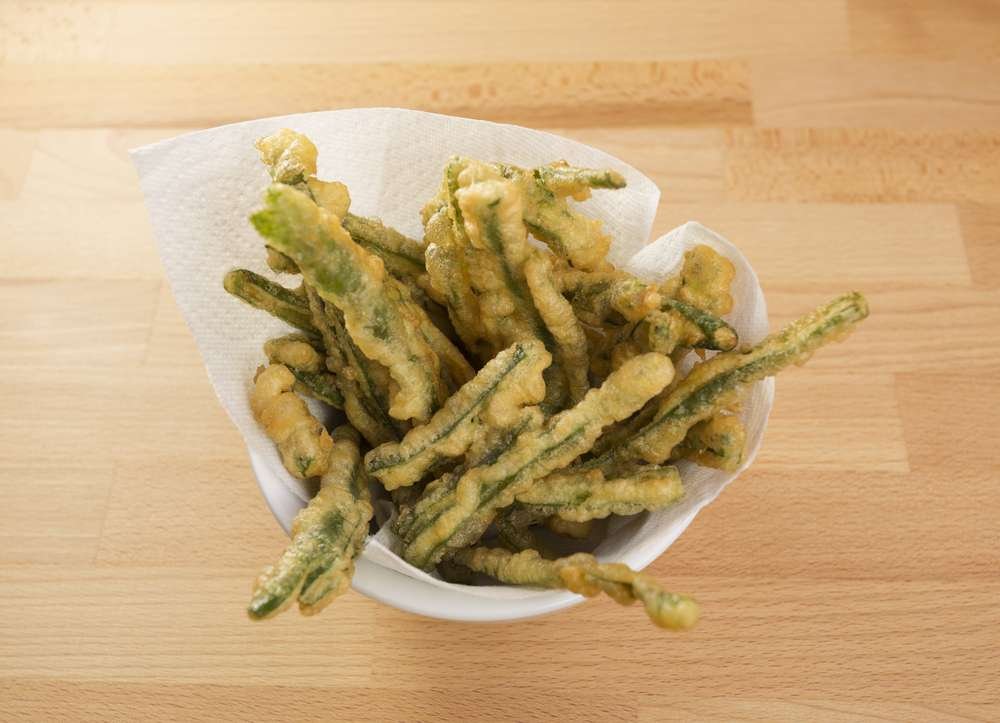
At first glance you might think this looks like a version of Japan’s tempura vegetables. While this is half correct, the truth is that actually Portugal’s fried green beans inspired Japan’s recipe! Being born out of contact from trade and exploration during the 16th century, the missionaries from Portugal introduced the technique of deep frying breaded vegetables to the Japanese.
As one of the only vegetarian dishes on our list, it still traces its name back to the sea, with a translation that literally means “ little fish from the garden,” due to the shape of the bean. Peixinhos da Horta are a great petisco or served as a side to go along with one of the country’s meaty sandwiches.
- We recommend trying it at: Tascardoso
- Address: Rua de O Século 242, 1250-095 Lisboa
- Hours: Mon- Sat. 12-3pm / 7-11:30 pm
For the best vegetarian and vegan food in Lisbon read more about the top restaurants in our related article.
14. Vinho Verde

It's common knowledge that Portugal has great wine, but did you know they have green wine? Vinho Verde is made from green grapes and fermented in a process that results in a very subtle carbonation. The title of green wine refers to the features of the region in which they grow, which is known for its abundance of green and lush foliage.
Grown in the Northwest of the country, in the Minho and Lima Valleys, this strand of wine was the first to ever be exported to European markets. Similar to a white wine but less sweet, you can expect a bubbly glass of refreshingly light wine when you open a bottle of vinho verde.
- We recommend picking up a bottle at any market or specialty wine store
15. Cherry Liqueur- Ginjinha
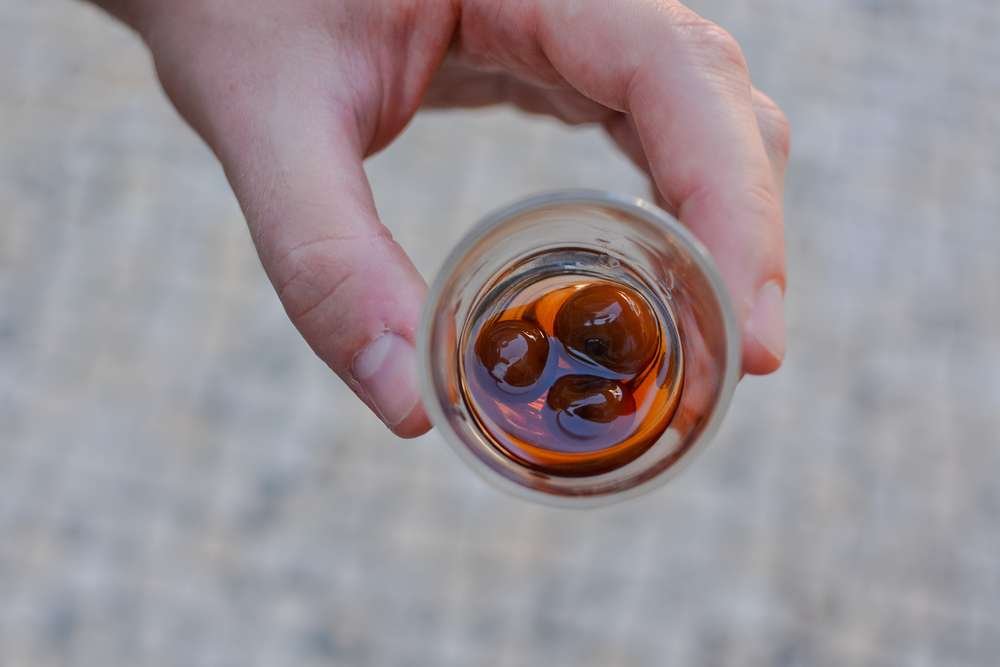
Ginjinha is a syrupy red liquor made from Morello sour cherries which are combined with a strong distilled alcohol. It’s made with copious amounts of sugar which masks how potent the alcohol is, so be warned when taking shots. There are two ways to order it, with (com) or without (sem) cherries. If you decide to order with cherries, make sure not to swallow the pit!
Ginjinha originated in Lisbon and was first served at the traditional bar, A Ginjinha. While many bars serve ginjinha, a walk through the traditional neighborhood of Alfama will expose you to residents who sell it directly from their windowsills. Stop for a shot which is often served in an edible chocolate glass.
- We recommend trying it at any bar or cafe or even from a local who is selling it homemade
That wraps up our list of the 15 must try foods when in Portugal. The country has much to offer and exploring it with eager appetites is the best way to introduce yourself to the culture!
Lisbon is also home to fantastic multicultural restaurants, vegetarian options and some of Europe’s best cafes! Leave us a comment below and let us know which Portuguese foods were your favorite and which restaurants do them best!

